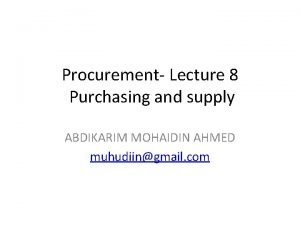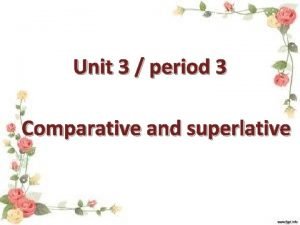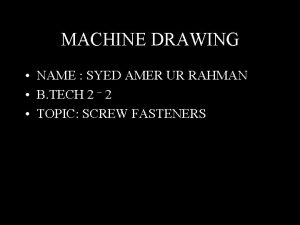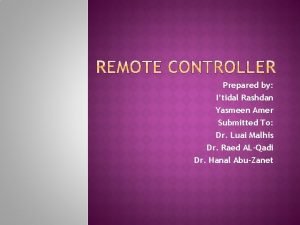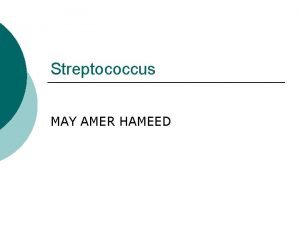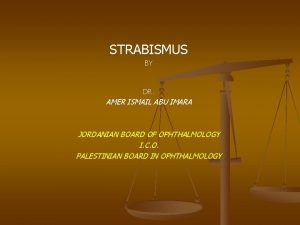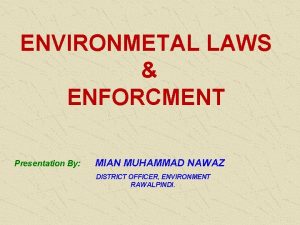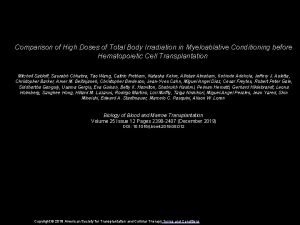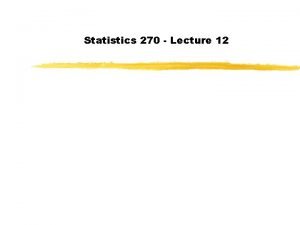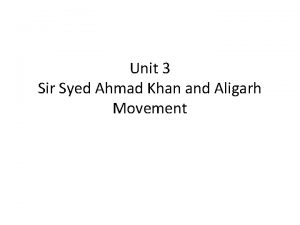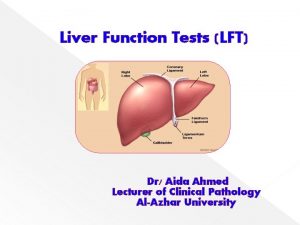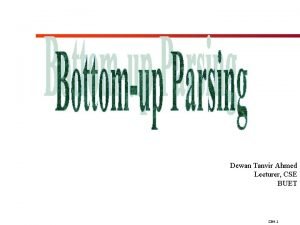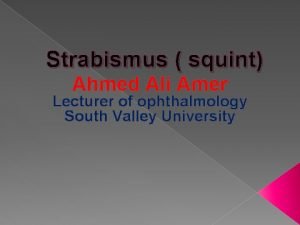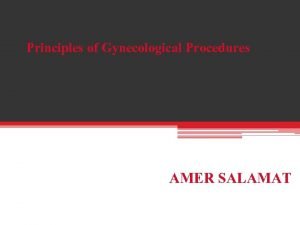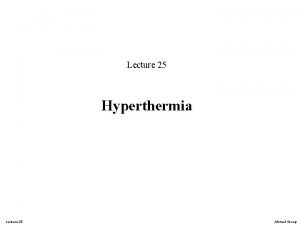Dr Ali Amer Ahmed Dijlah University college Lecture















































- Slides: 47

Dr. Ali Amer Ahmed Dijlah University college Lecture and examples 1 -3 2018

CHAPTER I DIODES 1. UNDERSTAND DIODE OPERATION AND SELECT DIODES FOR VARIOUS APPLICATIONS. 2. ANALYZE NONLINEAR CIRCUITS USING THE GRAPHICAL LOAD-LINE TECHNIQUE. 3. ANALYZE AND DESIGN SIMPLE VOLTAGE-REGULATOR CIRCUITS. 4. SOLVE CIRCUITS USING THE IDEAL-DIODE MODEL AND PIECEWISE-LINEAR MODELS. 5. UNDERSTAND VARIOUS RECTIFIER AND WAVE-SHAPING CIRCUITS. 6. UNDERSTAND SMALL-SIGNAL EQUIVALENT CIRCUITS.

– BASIC DIODE CONCEPTS 2. 1 Basic Diode Concepts 2. 1. 1 Intrinsic Semiconductors * Energy Diagrams – Insulator, Semiconductor, and Conductor the energy diagram for the three types of solids 3

– BASIC DIODE CONCEPTS 2. 1. 1 Intrinsic Semiconductors * Intrinsic (pure) Si Semiconductor: Thermal Excitation, Electron-Hole Pair, Recombination, and Equilibrium 4

– BASIC DIODE CONCEPTS 2. 1. 1 Intrinsic Semiconductors *Apply a voltage across a piece of Si: electron current and hole current 5

– BASIC DIODE CONCEPTS 2. 1. 2 N- and P- Type Semiconductors * Doping: adding of impurities (i. e. , dopants) to the intrinsic semiconductor material. * N-type: adding Group V dopant (or donor) such as As, P, Sb, … 6

– BASIC DIODE CONCEPTS 2. 1. 2 N- and P- Type Semiconductors * Doping: adding of impurities (i. e. , dopants) to the intrinsic semi-conductor material. * P-type: adding Group III dopant (or acceptor) such as Al, B, Ga, … 7

– BASIC DIODE CONCEPTS 2. 1. 3 The PN-Junction * The interface in-between p-type and n-type material is called a pn-junction. 8

– BASIC DIODE CONCEPTS 2. 1. 4 Biasing the PN-Junction * There is no movement of charge through a pn-junction at equilibrium. * The pn-junction form a diode which allows current in only one direction and prevent the current in the other direction as determined by the bias. 9

– BASIC DIODE CONCEPTS 2. 1. 4 Biasing the PN-Junction *Forward Bias: dc voltage positive terminal connected to the p region and negative to the n region. It is the condition that permits current through the pn-junction of a diode. 1 0

2. 1. 4 Biasing the PN-Junction *Forward Bias: dc voltage positive terminal connected to the p region and negative to the n region. It is the condition that permits current through the pn-junction of a diode. 1 1

– BASIC DIODE CONCEPTS 2. 1. 4 Biasing the PN-Junction *Forward Bias: 1 2

– BASIC DIODE CONCEPTS *Reverse Bias: dc voltage negative terminal connected to the p region and positive to the n region. Depletion region widens until its potential difference equals the bias voltage, majority-carrier current ceases. 1 3

– BASIC DIODE CONCEPTS *Reverse Bias: majority-carrier current ceases. * However, there is still a very small current produced by minority carriers. 1 4

– BASIC DIODE CONCEPTS 2. 1. 4 Biasing the PN-Junction * Reverse Breakdown: As reverse voltage reach certain value, avalanche occurs and generates large current. 1 5

– BASIC DIODE CONCEPTS 2. 1. 5 The Diode Characteristic I-V Curve 1 6

– BASIC DIODE CONCEPTS 2. 1. 6 Shockley Equation * The Shockley equation is a theoretical result under certain simplification: 1 7

– LOAD-LINE ANALYSIS OF DIODE CIRCUITS 2. 2 Load-Line Analysis of Diode Circuit 1 8

– LOAD-LINE ANALYSIS OF DIODE CIRCUITS Example 2. 1 - Load-Line Analysis 1 9

– LOAD-LINE ANALYSIS OF DIODE CIRCUITS Example 2. 2 - Load-Line Analysis 2 0

CIRCUITS – ZENER DIODE VOLTAGE-REGULATOR 2. 3 Zener-Diode Voltage-Regulator Circuits 2. 3. 1 The Zener Diode * Zener diode is designed for operation in the reverse-breakdown region. * The breakdown voltage is controlled by the doping level (-1. 8 V to -200 V). * The major application of Zener diode is to provide an output reference that is stable despite changes in input voltage – power supplies, voltmeter, … 2 1

CIRCUITS – ZENER-DIODE VOLTAGE-REGULATOR 2. 3. 2 Zener-Diode Voltage-Regulator Circuits * Sometimes, a circuit that produces constant output voltage while operating from a variable supply voltage is needed. Such circuits are called voltage regulator. * The Zener diode has a breakdown voltage equal to the desired output voltage. * The resistor limits the diode current to a safe value so that Zener diode does not overheat. 2 2

CIRCUITS – ZENER-DIODE VOLTAGE-REGULATOR Example 2. 3 – Zener-Diode Voltage-Regulator Circuits Actual Zener diode performs much better! 2 3

CIRCUITS – ZENER-DIODE VOLTAGE-REGULATOR 2. 3. 3 Load-Line Analysis of Complex Circuits * Use the Thevenin Equivalent 2 4

CIRCUITS – ZENER-DIODE VOLTAGE-REGULATOR Example 2. 4 – Zener-Diode Voltage-Regulator with a Load 2 5

CIRCUITS – ZENER-DIODE VOLTAGE-REGULATOR Exercise 2. 5 2 6

– IDEAL-DIODE MODEL 2. 4 Ideal-Diode Model * Graphical load-line analysis is too cumbersome for complex circuits, * We may apply “Ideal-Diode Model” to simplify the analysis: (1) in forward direction: short-circuit assumption, zero voltage drop; (2) in reverse direction: open-circuit assumption. * The ideal-diode model can be used when the forward voltage drop and reverse currents are negligible. 2 7

– IDEAL-DIODE MODEL 2. 4 Ideal-Diode Model * In analysis of a circuit containing diodes, we may not know in advance which diodes are on and which are off. * What we do is first to make a guess on the state of the diodes in the circuit: 2 8

– IDEAL-DIODE MODEL Example 2. 5 – Analysis by Assumed Diode States 2 9

– IDEAL-DIODE MODEL Exercise * Find the diode states by using ideal-diode model. Starting by assuming both diodes are on. 3 0

– PIECEWISE-LINEAR DIODE MODELS 2. 5 Piecewise-Linear Diode Models 2. 5. 1 Modified Ideal-Diode Model * This modified ideal-diode model is usually accurate enough in most of the circuit analysis. 3 1

– PIECEWISE-LINEAR DIODE MODELS 2. 5. 2 Piecewise-Linear Diode Models 3 2

– RECTIFIER CIRCUITS 2. 6 Rectifier Circuits * Rectifiers convert ac power to dc power. * Rectifiers form the basis for electronic power suppliers and battery charging circuits. 10. 6. 1 Half-Wave Rectifier 3 3

– RECTIFIER CIRCUITS * Battery-Charging Circuit * The current flows only in the direction that charges the battery. 3 4

– RECTIFIER CIRCUITS * Half-Wave Rectifier with Smoothing Capacitor * To place a large capacitance across the output terminals: 3 5

– RECTIFIER CIRCUITS 2. 6. 2 Full-Wave Rectifier Circuits * Center-Tapped Full-Wave Rectifier – two half-wave rectifier with out-of-phase source voltages and a common ground. * When upper source supplies “+” voltage to diode A, the lower source supplies “-” voltage to diode B; and vice versa. * We can also smooth the output by using a large capacitance. 3 6

– RECTIFIER CIRCUITS 2. 6. 2 Full-Wave Rectifier Circuits * The Diode-Bridge Full-Wave Rectifier: A, B C, D 3 7

– WAVE-SHAPING CIRCUITS 2. 7 Wave-Shaping Circuits 2. 7. 1 Clipper Circuits * A portion of an input signal waveform is “clipped” off. 3 8

– WAVE-SHAPING CIRCUITS 2. 7 Wave-Shaping Circuits 2. 7. 2 Clamper Circuits * Clamp circuits are used to add a dc component to an ac input waveform so that the positive (or negative) peaks are “clamped” to a specified voltage value. 3 9

– LINEAR SMALL-SIGNAL EQUIVALENT CIRCUITS 2. 8 Linear Small-Signal Equivalent Circuits * In most of the electronic circuits, dc supply voltages are used to bias a nonlinear device at an operating point and a small signal is injected into the circuits. * We often split the analysis of such circuit into two parts: (1) Analyze the dc circuit to find operating point, (2) Analyze the small signal ( by using the “linear smallsignal equivalent circuit”. ) 4 0

– LINEAR SMALL-SIGNAL EQUIVALENT CIRCUITS 2. 8 Linear Small-Signal Equivalent Circuits * A diode in linear small-signal equivalent circuit is simplified to a resistor. * We first determine the operating point (or the “quiescent point” or Q point) by dc bias. * When small ac signal injects, it swings the Q point slightly up and down. * If the signal is small enough, the characteristic is straight. 4 1

– LINEAR SMALL-SIGNAL EQUIVALENT CIRCUITS 2. 8 Linear Small-Signal Equivalent Circuits 4 2

– LINEAR SMALL-SIGNAL EQUIVALENT CIRCUITS 2. 8 Linear Small-Signal Equivalent Circuits * By using these two equations, we can treat diode simply as a linear resistor in small ac signal analysis. * Note: An ac voltage of fixed amplitude produces different ac current change at different Q point. 4 3

– LINEAR SMALL-SIGNAL EQUIVALENT CIRCUITS 2. 8 Linear Small-Signal Equivalent Circuits 44

– LINEAR SMALL-SIGNAL EQUIVALENT CIRCUITS Voltage-Controlled Attenuator * The function of this circuit is to produce an output signal that is a variable fraction of the ac input signal. * Two large coupling capacitors: behave like short circuit for ac signal and open circuit for dc, thus the Q point of the diode is unaffected by the ac input and the load. 4 5

– LINEAR SMALL-SIGNAL EQUIVALENT CIRCUITS Voltage-Controlled Attenuator 4 6

CIRCUITS – LINEAR SMALL-SIGNAL EQUIVALENT Exercise Voltage-Controlled Attenuator 4 7
 Ahmed muhudiin ahmed
Ahmed muhudiin ahmed Ali ahmed is a mathematics professor who tries to involve
Ali ahmed is a mathematics professor who tries to involve Shirkat ul amwal
Shirkat ul amwal Quick comparative and superlative
Quick comparative and superlative Syed amer
Syed amer Yasmeen amer
Yasmeen amer Amer hameed
Amer hameed Retino motor value
Retino motor value Aisha mian leaked
Aisha mian leaked Plgo 2001
Plgo 2001 True or false true or false
True or false true or false Osma osnovna skola amer ćenanović
Osma osnovna skola amer ćenanović Marka mikroprocesorów
Marka mikroprocesorów Amer beitinjaneh
Amer beitinjaneh Ahmed bawany academy school & college
Ahmed bawany academy school & college 01:640:244 lecture notes - lecture 15: plat, idah, farad
01:640:244 lecture notes - lecture 15: plat, idah, farad 詹景裕
詹景裕 Abu ali sina university peshawar
Abu ali sina university peshawar A college professor never finishes his lecture
A college professor never finishes his lecture Political services of sir syed ahmad khan
Political services of sir syed ahmad khan Rubaiyat definition
Rubaiyat definition Examples of inductive method
Examples of inductive method Sir syed ahmed khan school
Sir syed ahmed khan school Ahmed salman rushdie
Ahmed salman rushdie Ahmed salemi
Ahmed salemi Salyaneli eyaletler şifre
Salyaneli eyaletler şifre Dr mohammed ahmed
Dr mohammed ahmed Saad ahmed economics
Saad ahmed economics Ahmed mustapha
Ahmed mustapha Ideology of pakistan and sir syed ahmed khan
Ideology of pakistan and sir syed ahmed khan Is an extended erp module
Is an extended erp module Dr mohammed ahmed
Dr mohammed ahmed Ahmed helmy uf
Ahmed helmy uf Dr fawad randhawa
Dr fawad randhawa Anna molka ahmed paintings
Anna molka ahmed paintings Amina ahmed md
Amina ahmed md Aida ahmed
Aida ahmed Gemini by ahmed essop questions and answers
Gemini by ahmed essop questions and answers Ahmed hashim ibrahim
Ahmed hashim ibrahim Kulsum ahmed
Kulsum ahmed Ahmed miree
Ahmed miree Static compliance calculation
Static compliance calculation Glutamate oxaloacetate transaminase test
Glutamate oxaloacetate transaminase test Hezarfen ahmet çelebi lisesi
Hezarfen ahmet çelebi lisesi Dr tahmeed ahmed
Dr tahmeed ahmed Chikhaoui ahmed
Chikhaoui ahmed Shanzeh ahmed
Shanzeh ahmed Cse buet
Cse buet
